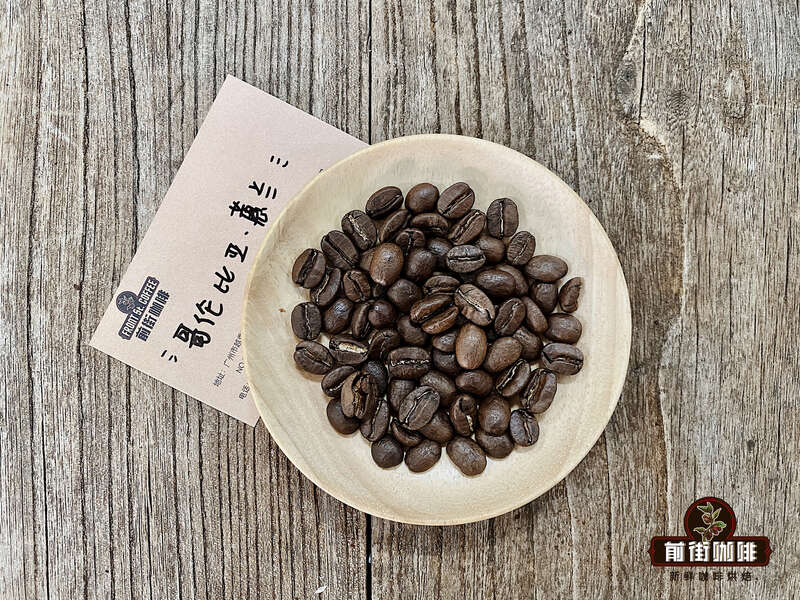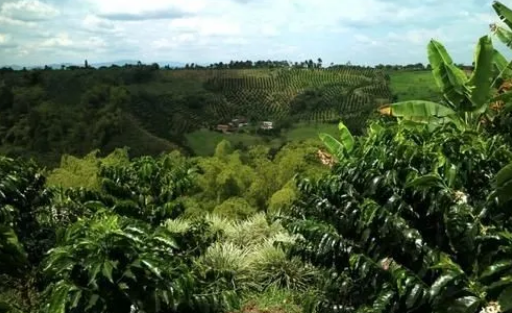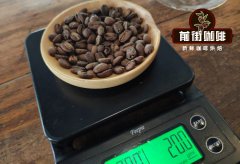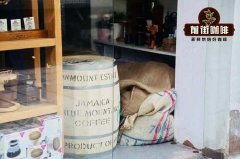Flavor characteristics of Coffee beans in Cymbidium area of Colombia
When choosing a new rations bean, Qianjie Coffee will select the beans from each major producing area that are most representative of the original local flavor, and then introduce them to you in a small package of 100g. Qianjie hopes that every coffee lover can drink the basic flavor of a coffee producing area at the most favorable price.

Many novice coffee beginners do not know what flavor they are suitable for, and they are also worried that they will waste money to buy coffee beans that step on thunder. At this time, it is most appropriate to choose the "rations and beans" in front of the street. Starting with the most classic flavor of the major producing areas, you do not have to spend too much "wrong money" to pull weeds and kill two birds with one stone.
In addition, most of the grain beans in Qianjie are treated with water, and Qianjie takes into account that the washing treatment will better reflect the cleanliness of coffee taste and the purity of flavor, so when analyzing the specific flavor of a coffee producing area, will use the water-washed beans in that area as a reference.

At present, there are a total of seven producing areas of grain beans on the street, namely, Yegasuefei in Ethiopia, Tarazu in Costa Rica, Huilan in Colombia, Lin Dong Mantning in Indonesia, Baoshan in Yunnan, China, Vivette Nanguo in Guatemala, and South Minas in Brazil. In this article, we will talk in detail about the producing area of Columbia Cymbidium, and see what the characteristic flavor of the producing area is.

Country: Colombia
Producing area: Huilan
Altitude: 1500-1800 m
Variety: Kaddura
Treatment: washing treatment
Flavor: nuts, dark chocolate, caramel, soft fruit acid
Columbia Cymbidium
Huilan Province, located in the southern part of the Central Mountains in southern Colombia, is the most famous boutique coffee producing area in the country. This area is a hilly land surrounded by mountains, planted more than 1500 meters above sea level, where the most important rivers in Colombia meet, bringing abundant water resources and moisture.

Huilan area belongs to the mountain terrain, and coffee is grown on the slopes of the canyon, so it has a high altitude and suitable temperature for growing high-quality Arabica beans. The climate of the canyon slope not only prevents the cold wind from blowing in, but also keeps the mountain breeze cool without high temperature, and Rain Water is also relatively abundant, which can be said to be a unique place for coffee cultivation. Colombian coffee workers go up the mountain to pick coffee beans by hand, and most of the coffee beans are washed.

Huilan has a combination of excellent soil and geographical advantages for growing coffee, and some of the most complex and fruity Colombian coffees come from here. This area belongs to the selected alpine coffee beans of the Colombian State Corporation, which is known as the national treasure of Colombia. With its superior geographical and climatic conditions, Colombian coffee has always maintained high quality. Huilan coffee beans have a full taste and heavy texture. It has nutty, chocolate, caramel and other aromas and supple pleasant acidity.
Coffee variety
Kaddura, a natural variety of Arabica Bourbon, was discovered in Brazil in 1937. Its tree is not as tall as bourbon and smaller. Due to inheriting the blood of bourbon, the disease resistance is relatively weak, but the yield is higher than that of bourbon. Although found in Brazil, Kaddura is not suitable for growing in Brazil, so it is not planted on a large scale in Brazil, but is popular in Central and South America, such as Colombia, Costa Rica and Nicaragua. Kaddura is planted on a large scale.
Washing treatment method
Coffee farmers first pour the picked coffee berries into a large tank, the immature inferior beans will surface, and the ripe and full fruits will sink to the bottom of the water, and the defective beans (fruits) floating on the surface will be removed. Then use the pulp sieving machine to remove the outer skin and pulp of the coffee fruit, when the coffee beans are still attached to a layer of slippery pectin. Put the coffee beans with pectin in the fermentation tank for 16 hours and 36 hours, during which the microbes will decompose the pectin. After the fermentation is completed, a large amount of water is used to remove the pectin residue from the coffee beans. Finally, the washed coffee beans are dried in the sun. The water washing method has both soft and strong acidity, suitable mellow, sweet and spicy.

How does Qianjie coffee brew Colombian Huilan coffee?
Qianjie Coffee uses V60 filter cup to brew Columbia 60 cone filter cup hole is relatively large, coupled with its unique spiral curve ribs, so that the air can be discharged more easily to improve the extraction quality.
Water temperature: 90-91 degrees
Degree of grinding: BG#6m (fine sugar size / 20 sieve bowl sieve powder to 80%)
Ratio of powder to water: 1:15
Amount of powder: 15g

Qianjie cooking technique:
In the first stage, 30 grams of water is injected for 30 seconds, followed by 95 grams (about 125 grams indicated by the electronic scale). The injection is completed in about 1 minute, and the remaining 100 grams are injected at 3 places in the powder layer when the water level drops to 2 grams (about 225 grams shown by the electronic scale). About 1 minute and 40 seconds. The filtration is completed, remove the filter cup and complete the extraction.
Cooking flavor: nuts, dark chocolate, soft fruit acid in the middle, sweet taste of caramel.
Important Notice :
前街咖啡 FrontStreet Coffee has moved to new addredd:
FrontStreet Coffee Address: 315,Donghua East Road,GuangZhou
Tel:020 38364473
- Prev

What's the difference between hand grinder and electric grinder? What brand do you recommend for the hand mill?
For more detailed details, the most important thing for any manual or electric grinder is how to break the beans. For extraction, we need a uniform grinding size. The closer we get to the uniform, the better. Inconsistent particle size can lead to insufficient or excessive extraction in the cup, so it can be ground as accurately as possible to make the extraction more uniform. This makes the whole cleaner and tastes better.
- Next

What is the F1 hybrid that appears now? Will F1 coffee be more adaptable to the environment?
Professional coffee knowledge exchange more information about coffee beans Please pay attention to the changing weather patterns in coffee workshops (Wechat official account cafe_style). Diseases and insect pests, deforestation and rising temperatures are just some of the environmental factors that threaten global coffee production. It is estimated that by 2050, we may lose as much as 40% of our arable land to grow coffee, which makes today's coffee industry face the forefront.
Related
- Beginners will see the "Coffee pull flower" guide!
- What is the difference between ice blog purified milk and ordinary milk coffee?
- Why is the Philippines the largest producer of crops in Liberia?
- For coffee extraction, should the fine powder be retained?
- How does extracted espresso fill pressed powder? How much strength does it take to press the powder?
- How to make jasmine cold extract coffee? Is the jasmine + latte good?
- Will this little toy really make the coffee taste better? How does Lily Drip affect coffee extraction?
- Will the action of slapping the filter cup also affect coffee extraction?
- What's the difference between powder-to-water ratio and powder-to-liquid ratio?
- What is the Ethiopian local species? What does it have to do with Heirloom native species?

